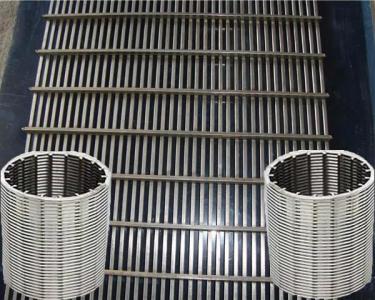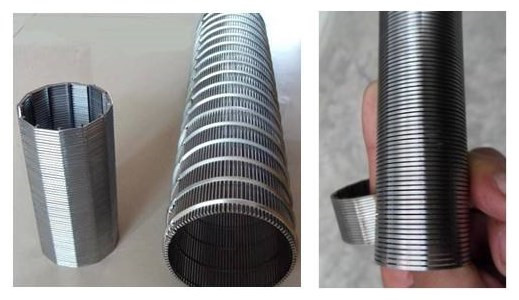A carbon monoxide alarm converts the concentration of carbon monoxide gas in the air into an electrical signal through a carbon monoxide sensor. The size of the electrical signal is related to the concentration of carbon monoxide. Carbon monoxide alarms are classified according to the sensors used, and are generally classified as semiconductor carbon monoxide alarms, electrochemical carbon monoxide alarms, infrared carbon monoxide detectors, etc., and have the best performance in terms of measurement sensitivity, accuracy, stability, and resistance to cross gas interference. The infrared detector is carbon monoxide, but more expensive for laboratory use, civilian general semiconductor and electrochemical carbon monoxide alarm.
In order not to damage the alarm, provide an ideal protection, and prevent unnecessary alarms, please follow the following guidelines for not installing a carbon monoxide alarm:
1. It is recommended not to install the alarm in a garage, kitchen, or furnace room. Installation at these locations may cause annoying alarm sounds, and may be exposed to substances that can damage or contaminate the sensor head, or may not allow people to hear alarm sounds elsewhere in the home. In the garage, the car exhaust will contain some carbon monoxide. The carbon monoxide concentration will be higher when the engine starts, causing an alarm.
2. It is normal that transient high concentrations of carbon monoxide are produced in the kitchen, furnace room and some burning appliances. If you install the alarm too close to the appliances, it may often alarm and become a noise.
If you must install the alarm near the kitchen or heating appliances, consider taking a distance from these appliances.
3. Do not install in dirty, dusty or greasy places like kitchens, garages and houses. Oil, dust, or household chemicals can contaminate or be on the sensor's sensor head, preventing the alarm from functioning. Do not block the alarm vents. Install the alarm in a place where it will not be blocked by curtains, furniture, or other objects. Also do not install in places where air does not circulate, such as vaulted ceilings or the tops of pointed roofs, where carbon monoxide cannot reach the sensor heads in time to issue early warnings.
4. Do not install in strong winds from ceiling fans. Do not install near doors and windows that open to the outdoors, near fresh air vents, or in any other well-ventilated area. Fast circulating air from the fan or outdoor fresh air can affect the alarm response.
5. Do not install at temperatures below 4°C or above 38°C. These include rooms, lofts, hallways, and garages. Extreme temperatures will affect the sensitivity of the alarm.
Tips:
Avoid the following conditions : Due to the influence of outdoor conditions, there will be too much fuel spillage or reverse smoke in the burning appliances. Such as: wind direction or wind speed, or large gusts;
• Long-term use of burning appliances without ventilation ducts (furnaces, ovens, fireplaces, etc.).
• Changes in temperature cause exhaust gas to accumulate near the ground.
· The car is idle near the garage or residence.

In order not to damage the alarm, provide an ideal protection, and prevent unnecessary alarms, please follow the following guidelines for not installing a carbon monoxide alarm:
1. It is recommended not to install the alarm in a garage, kitchen, or furnace room. Installation at these locations may cause annoying alarm sounds, and may be exposed to substances that can damage or contaminate the sensor head, or may not allow people to hear alarm sounds elsewhere in the home. In the garage, the car exhaust will contain some carbon monoxide. The carbon monoxide concentration will be higher when the engine starts, causing an alarm.
2. It is normal that transient high concentrations of carbon monoxide are produced in the kitchen, furnace room and some burning appliances. If you install the alarm too close to the appliances, it may often alarm and become a noise.
If you must install the alarm near the kitchen or heating appliances, consider taking a distance from these appliances.
3. Do not install in dirty, dusty or greasy places like kitchens, garages and houses. Oil, dust, or household chemicals can contaminate or be on the sensor's sensor head, preventing the alarm from functioning. Do not block the alarm vents. Install the alarm in a place where it will not be blocked by curtains, furniture, or other objects. Also do not install in places where air does not circulate, such as vaulted ceilings or the tops of pointed roofs, where carbon monoxide cannot reach the sensor heads in time to issue early warnings.
4. Do not install in strong winds from ceiling fans. Do not install near doors and windows that open to the outdoors, near fresh air vents, or in any other well-ventilated area. Fast circulating air from the fan or outdoor fresh air can affect the alarm response.
5. Do not install at temperatures below 4°C or above 38°C. These include rooms, lofts, hallways, and garages. Extreme temperatures will affect the sensitivity of the alarm.
Tips:
Avoid the following conditions : Due to the influence of outdoor conditions, there will be too much fuel spillage or reverse smoke in the burning appliances. Such as: wind direction or wind speed, or large gusts;
• Long-term use of burning appliances without ventilation ducts (furnaces, ovens, fireplaces, etc.).
• Changes in temperature cause exhaust gas to accumulate near the ground.
· The car is idle near the garage or residence.
Mine sieving Mesh/ mine sieve screen wire mesh is a kind of metal mesh components for sifting and filtering.
Mine sieving Mesh/ mine sieve screen wire mesh used for sifting, filtering, drying, etc.
Wire mesh screen offers high strength and conveying strength, can be made into different sifting and filtering devices.
1.Material:Stainless Steel Wire Mesh.
2.wire dia:1.5mm-12mm
3.sheet size: 1x2m,1.2x2.4m or as requests.
4.Variety: Stainless steel welded mine screen mesh, slit sieve, sieve screen basket, vibrating screen mesh welded, cylindrical mesh, wire mesh sieve bend shaped, high-strength mesh.


Mining Screen,Mining Tools,Underground Mining Screen,Stainless Mining Screen
Anping Shengjia Hardware Mesh Co.,LTD , https://www.oilshaleshakerscreen.com